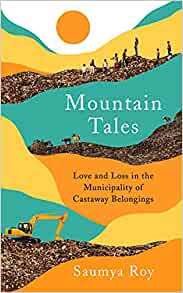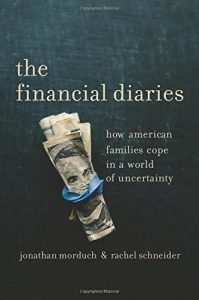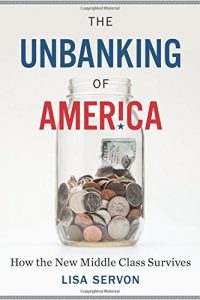The UK economy is growing at a decent clip now, but the consequences of the long downturn linger on. The distinguishing feature of the post-2008 economic landscape in most western economies is how long growth has been so weak, how long it has taken for GDP to regain its previous peak. The final chapter of [amazon_link id=”0300203772″ target=”_blank” ]Hard Times: The Divisive Toll of the Economic Slump[/amazon_link] by Tom Clark with Anthony Heath describes the book’s suggestions for tackling the consequences of lengthy economic weakness as “wearyingly familiar.” That doesn’t make it any the less important to be reminded by this book of the social impact of the seven lean years since the Great Financial Crisis. Too often, discussions about the economic issues and the social issues proceed separately, but they are tightly linked.
[amazon_image id=”0300203772″ link=”true” target=”_blank” size=”medium” ]Hard Times: The Divisive Toll of the Economic Slump[/amazon_image]
The book is the product of a five-year research programme conducted by the University of Manchester (my new home as Professor of Economics from 1 September) and Harvard University, directed by Robert Putnam, famously author of [amazon_link id=”0743203046″ target=”_blank” ]Bowling Alone[/amazon_link] and its fascinating precursor [amazon_link id=”0691037388″ target=”_blank” ]Making Democracy Work: Civic Traditions in Modern Italy.[/amazon_link] The presentation of those depressingly familiar economic statistics is accompanied by interviews with a range of people affected by unemployment, or precarious employment, or benefit cuts since 2008. It humanizes the – well, “wearyingly familiar” – statistics and charts.
The human stuff – the social capital – really matters. [amazon_link id=”0300203772″ target=”_blank” ]Hard Times[/amazon_link] begins by citing a classic (1933) sociological study of the effects of mass unemployment, [amazon_link id=”0765809443″ target=”_blank” ]Marienthal: the sociography of an unemployed community[/amazon_link]. In this small Austrian town whose mill closed, people were asked to keep diaries, which recorded the loss of energy and social activity. Unemployment brought lethargy and isolation. The alternative in other places during the 1930s was rage.
[amazon_image id=”0765809443″ link=”true” target=”_blank” size=”medium” ]Marienthal (Ppr): The Sociography of an Unemployed Community[/amazon_image]
Other sociologists have demonstrated the importance of social ties in other contexts. One of my all-time favourites is Eric Klinenberg’s [amazon_link id=”0226443221″ target=”_blank” ]Heatwave[/amazon_link], which documents the clear impact of different family structures on ‘excess’ death rates during a Chicago heatwave: Hispanic families and neighbourhoods, more cohesive than equally poor African-American neighbourhoods, saw fewer fatalities. Another recent book has pointed to the psychological debilitation caused by poverty, [amazon_link id=”1846143454″ target=”_blank” ]Scarcity[/amazon_link] by Sendhil Mullainaithan and Eldar Shafir.
[amazon_image id=”1846143454″ link=”true” target=”_blank” size=”medium” ]Scarcity: Why having too little means so much[/amazon_image]
It seems, though, that a reminder is needed that money (lack of) matters as much because of the social as well as the economic consequences. [amazon_link id=”0300203772″ target=”_blank” ]Hard Times[/amazon_link] argues that the roots of a lack of social resilience stretch back before the crisis. “For all the riches of the millennial years, we found swathes of society that were already sorely exposed by that time.” Rising poverty rates before 2008, declining volunteering, drops in marriage rates (in the US) among some disadvantaged groups and of course rising inequality, all “worked to leave more of the vulnerable braving the storm in effective isolation.”
What to do? Well, it is indeed “wearyingly familiar”. Although the book supports the argument made for example by David Clark and Richard Layard in [amazon_link id=”1846146054″ target=”_blank” ]Thrive[/amazon_link] for additional mental health support, its point is that fundamentally money matters – jobs, a duly enforced minimum wage and decent working conditions, and an adequate safety net. Without an adequate income, and beset by anxiety about financial insecurity, people become isolated. Isolation damages their health and well-being, and causes a vicious cycle of vulnerability and still more insecurity. People with not enough money are not bowling alone, they are just alone.
The economic dilemmas involved in any job market interventions or social security are familiar too, the incentive effects and the trade-offs. But it’s good to be reminded that social consequences should form part of the calculation.



